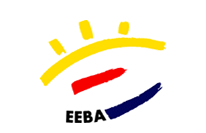Local Information - About Aarhus
Aarhus is the second largest city in Denmark with a population of approximately 325,000. The culture is lively and young, mainly due to the city's large student population (approximately 50,000).
Aarhus is an old city, but still young at heart! The city was founded by the Vikings as an open trading post at the mouth of the river. Aarhus is an educational and cultural centre, and its true soul is a charming blend combining the atmospheres of a beautiful town and an active city, where you will feel welcome and at home. Scattered around the city you will find many restaurants, bars and cafes, many of which are located at the river and suited to all budgets.
Aarhus is really a remarkable place and offers many attractions - such as
the open-air museum "The Old Town", the ARoS Art Museum, Marselisborg Castle Queen Margrethe II's summer residence, Moesgård Museum where you can go back and visit the early Viking Age, and many more. Discover its delights yourself. Most attractions are within walking distance and the
city of Aarhus is the place where every wish can be fulfilled in fascinating and inspiring surroundings.
Ideally situated at its bay, fringed by beaches, forests and lush scenery, yet bustling with life, Aarhus offers an inspiring setting for the conference.
For further information about Aarhus please see VisitAarhus' web site www.visitaarhus.dk.

Local Information - About Denmark
Banks
Banks are open from 09:30 to 16:00 on weekdays with late hours until 18:00 on Thursdays (closed Saturdays and Sundays). There are numerous cash machines throughout the city and the money transfer offices are open on Saturday from 10:00 to 15:00, for example Forex Bank at Banegårdspladsen 20.
Currency
The currency in Denmark is Danish Kroner (DKK). One krone is divided into 100 Øre.
Electricity
Danes use 220 volt for electric appliances. Denmark, like most other European countries, has 220-volt AC, 50Hz current and uses two-pin continental plugs. If you visit from the UK and Ireland, you will need an adaptor for electric appliances, whereas North Americans need a transformer in order to use their 110/125V appliances.
Language
The mother tongue in Denmark is Danish, which is closely related to both Swedish and Norwegian. In general Danes speak English very well, and some even German and French.
Time zone
Denmark follows Central European Time (CET) which is one hour ahead of Greenwich Mean Time (GMT) and during Summer Denmark follows Central European Summer Time (CEST) which is two hours ahead of Greenwich Mean Time (GMT).
Weather
The weather in Denmark is heavily influenced by the country's proximity to both sea and to the continent. This means that the weather varies depending on the dominant wind direction and the season.
You can check the weather forecast here:
www.dmi.dk/eng/index/forecasts.htm.
Tipping
Tipping is greatly appreciated, but not expected, and you should only do so if you feel you are getting exceptionally good service. If you do so 10 percent of the bill is sufficient.
Local transportation
It is very easy and safe to travel around the city by bus, train or taxi. You can buy tickets at almost every station or at a kiosk. You can also purchase your tickets directly in the bus.





